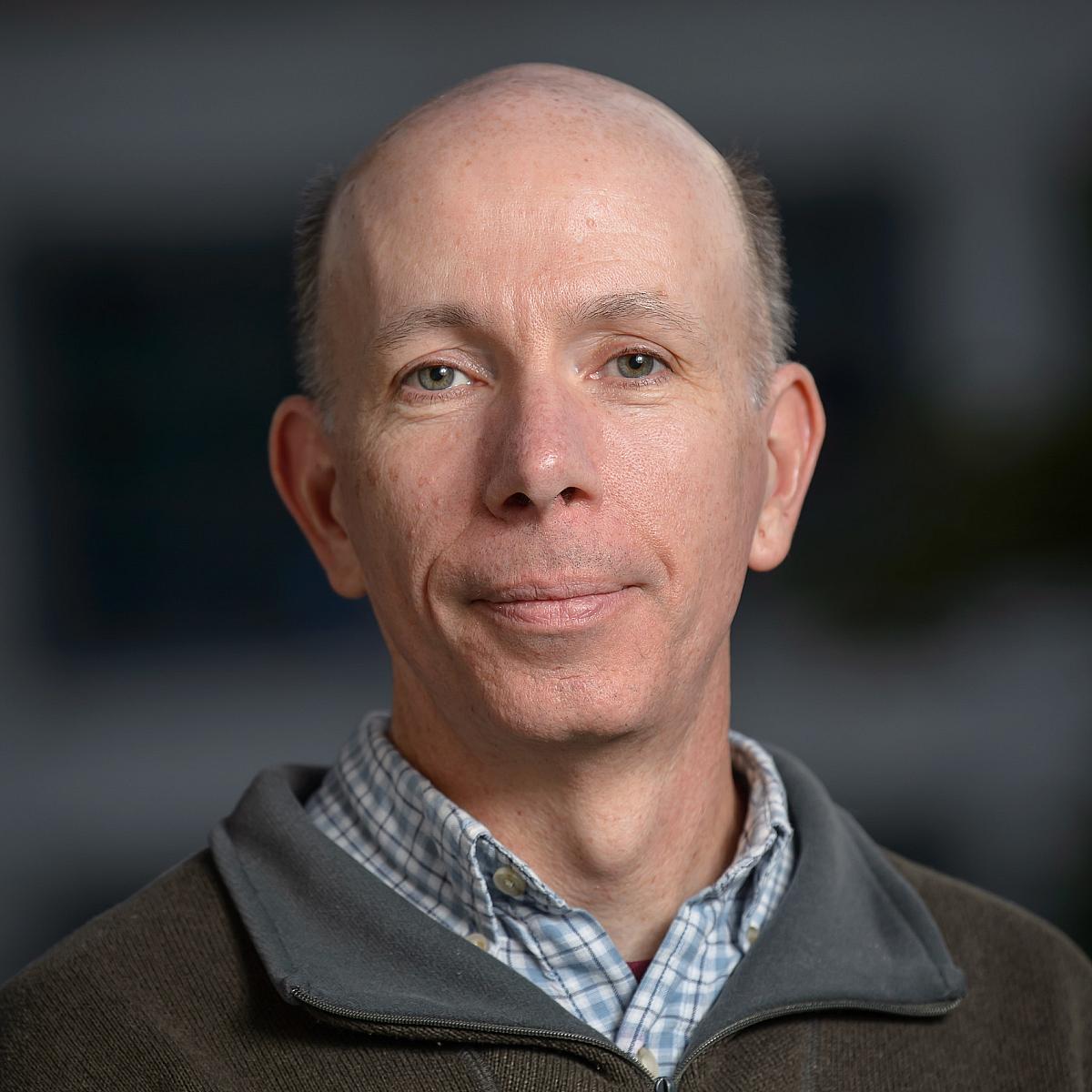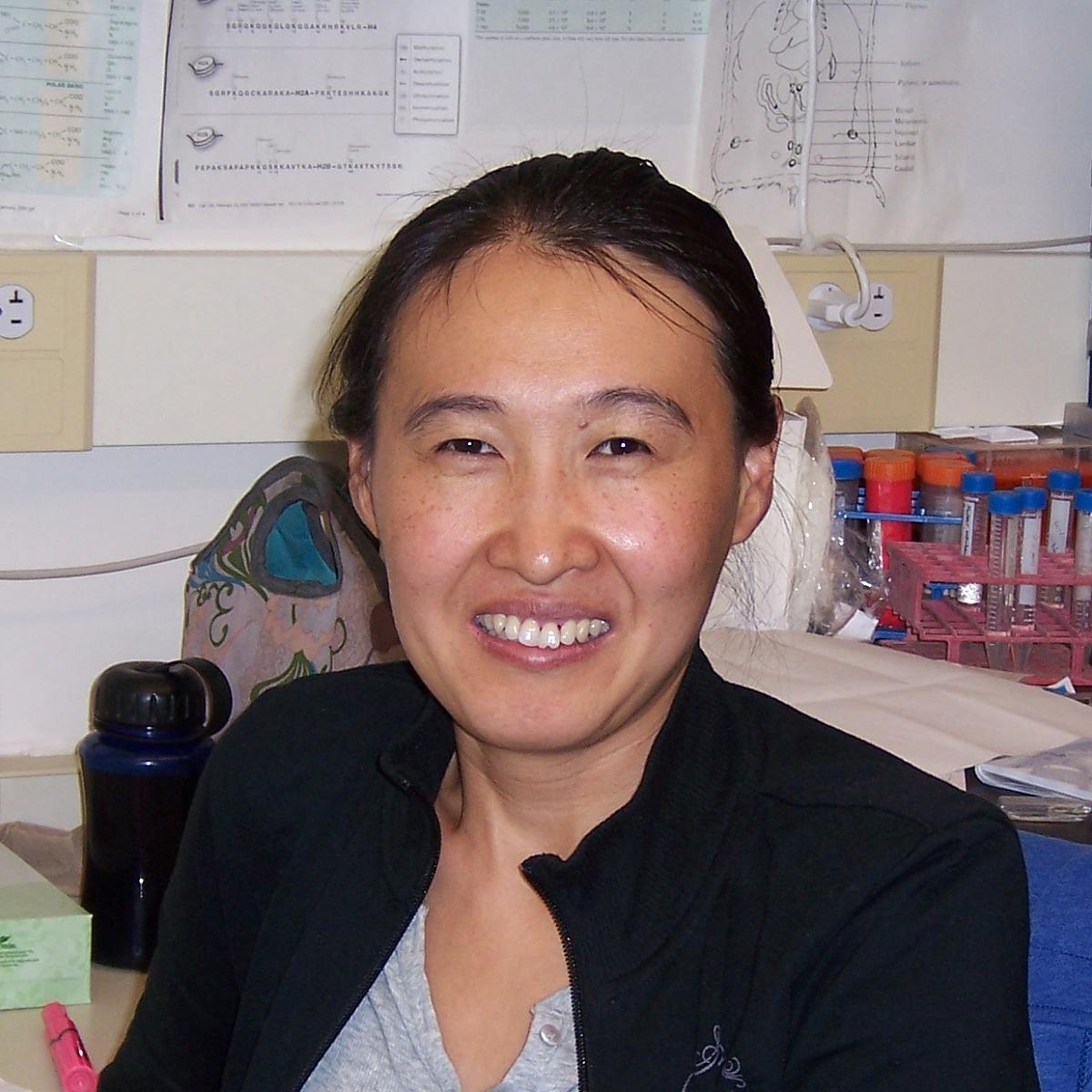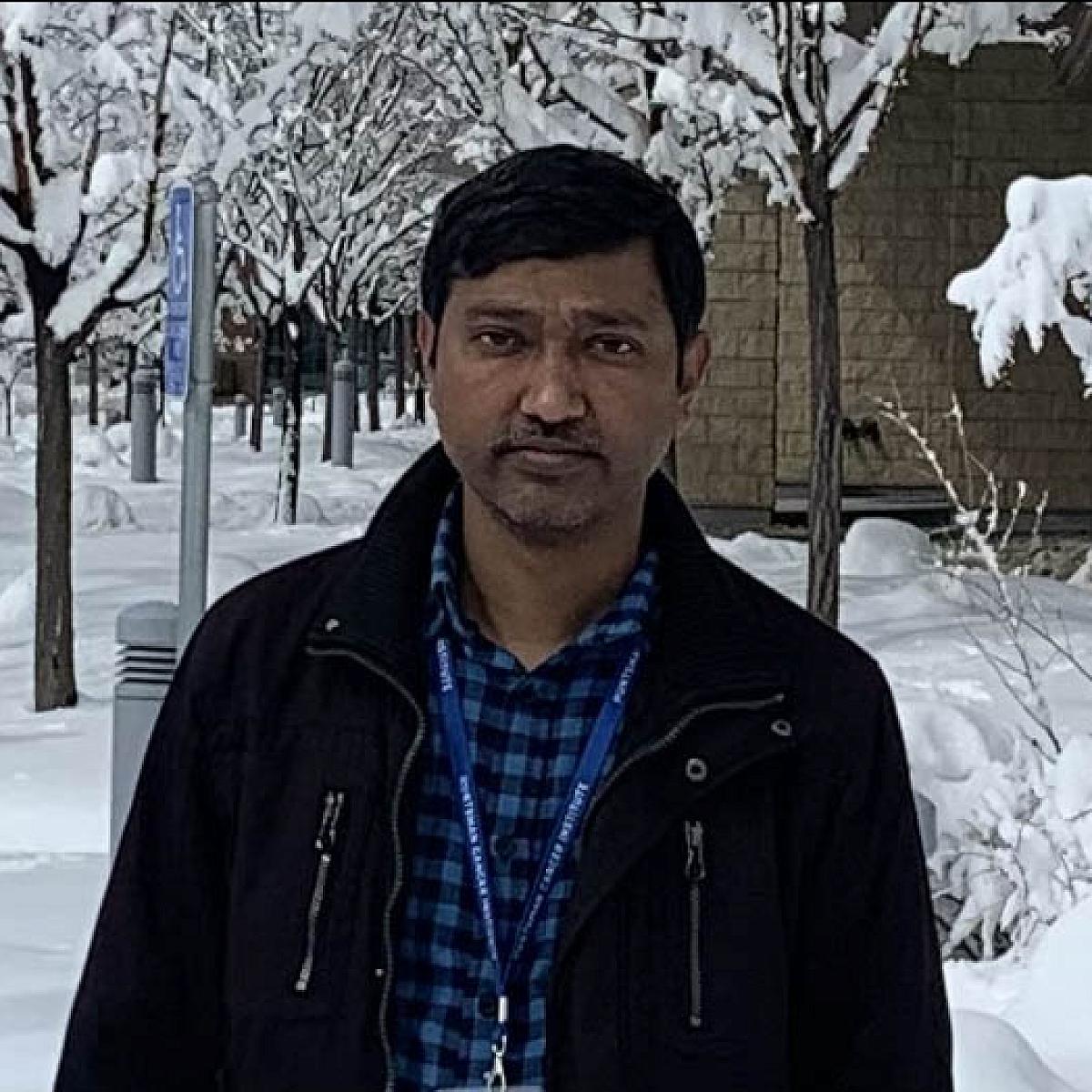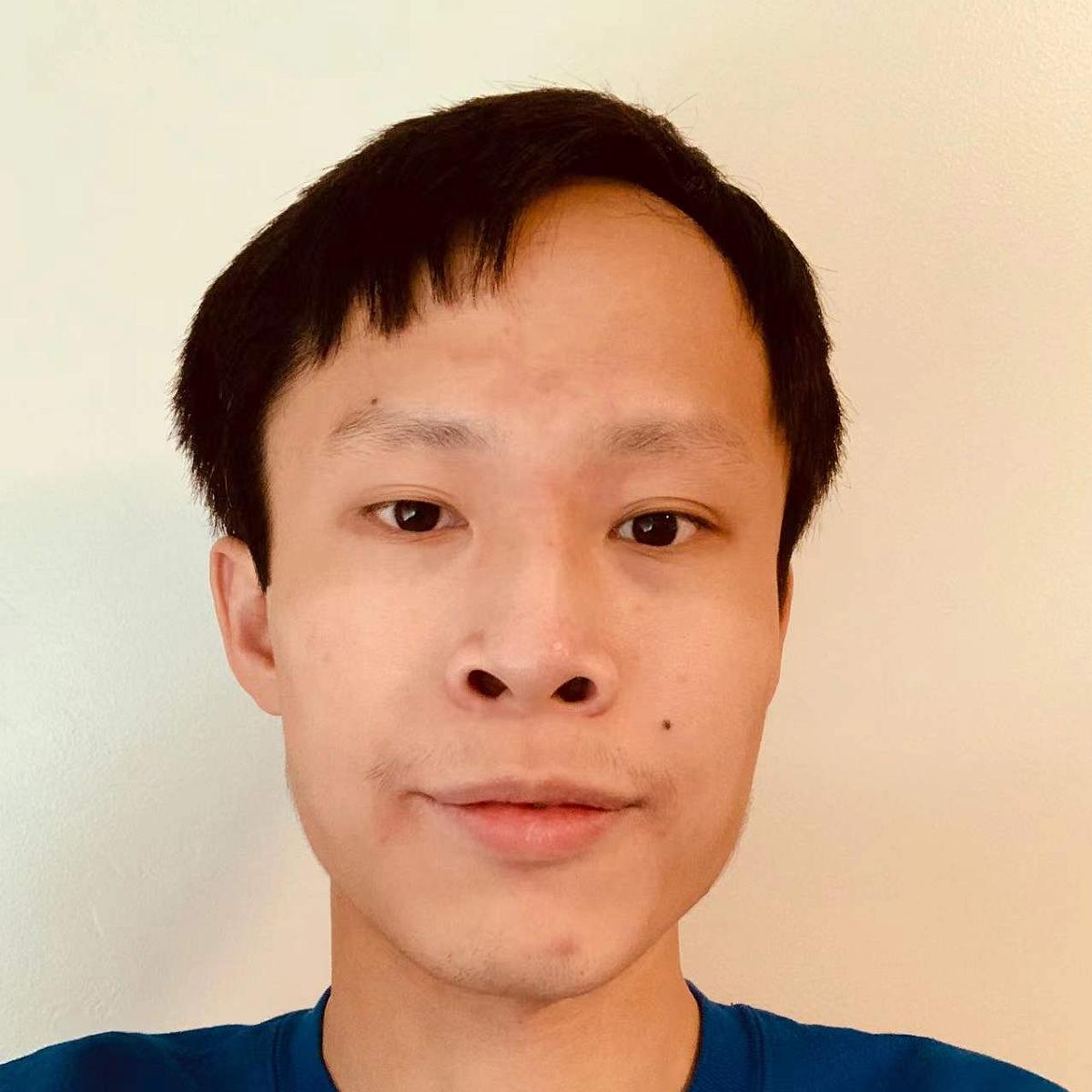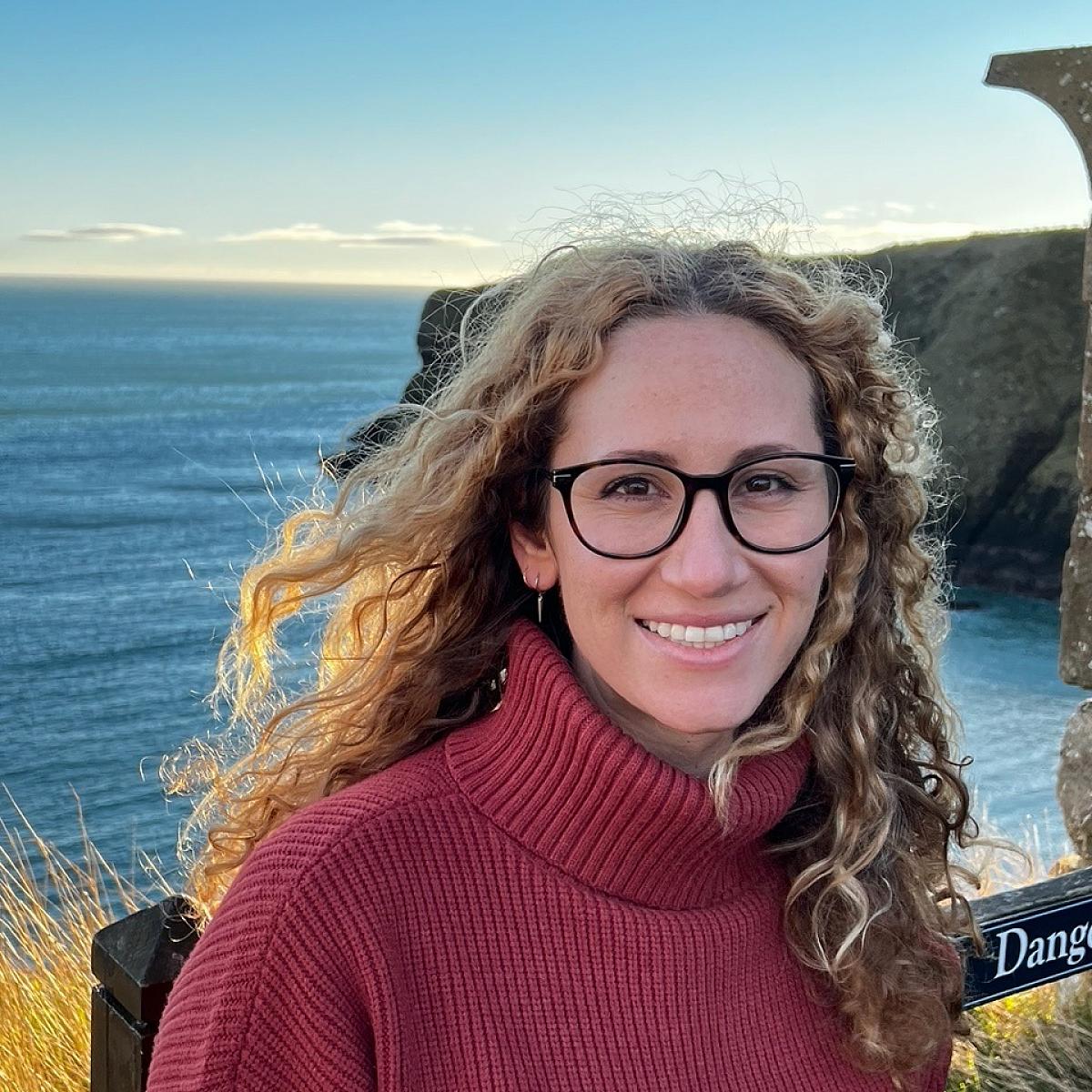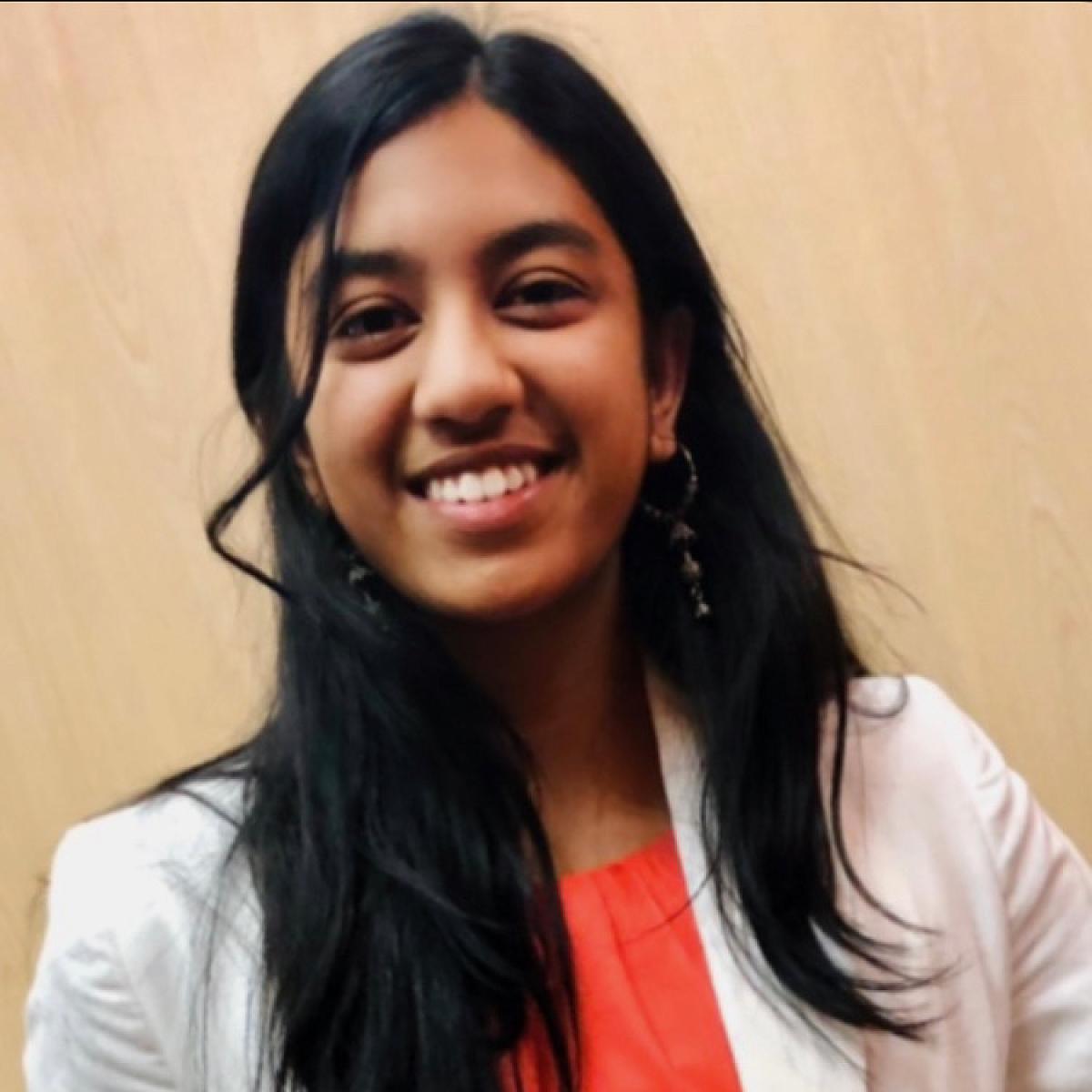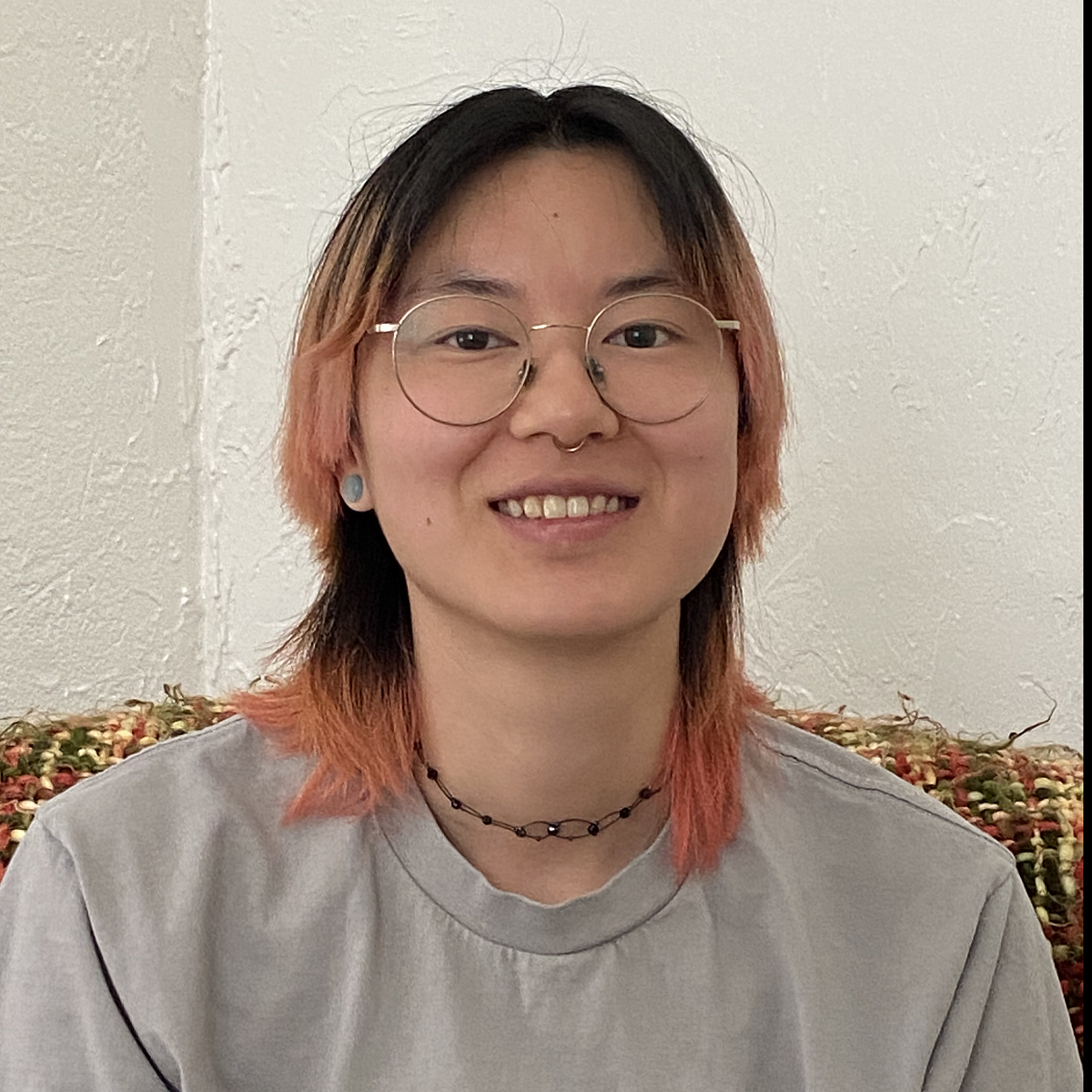
Dean Tantin Lab
Welcome to the Tantin Laboratory!
Our research emphasis is stem cells and the activities that endow cells with stem-like properties such as long life, homing to specific niches, self-renewal, and the ability to rapidly induce cohorts of silent but poised genes in response to external cues. In lymphocytes, these properties are important for the formation of immunological memory, to generate cells with strong anti-tumor activity, and to generate highly pathogenic cells in situations of autoimmunity. We study how these processes are controlled by sequence-specific DNA-binding transcription factors, as well as their upstream regulators and downstream effectors. Transcription factors are by far the most dominant controllers of cell fate. They do this through their ability to bind to specific DNA sequences within chromatin and in conjunction with other DNA-bound factors. For this reason, transcription factors play central roles in development, cell fate decisions and cellular reprogramming. Aberrations in transcription factor function result in immune dysfunction, developmental defects, and cancer. Our research merges molecular biological and in vivo experiments to determine the function and physiological impact of transcription factor activity. One guiding principle is that, as enabling technologies allow for future drug development to focus on transcription factors and their cofactors, direct pharmaceutical targeting of gene expression will become increasingly prevalent.
Interplay between transcription factors Oct1 and Oct4 in pluripotent cells and their differentiated progeny.
Spatiospecific Oct4 cofactors.
Oct4 redox regulation in reprogramming and peri-implantation development.
Topological interactions between linked T cell effector gene loci in naïve, activated, resting and restimulated T cells.
Roles of the transcriptional cofactor OCA-B/Pou2af1/Bob.1 in T cell memory, autoimmunity and anti-tumor immunity.
Exploiting OCA-B as a possible drug target.
Testing Oct1’s ability to improve human blood cell differentiation.
Contact Us
Huntsman Cancer Institute
2000 Circle of Hope, Research South
Room 3707 (LL376 for courier service)
Salt Lake City, UT 84112-5550
Lab Phone: 801-587-3802
Office Phone: 801-587-3035
Email: dean.tantin@path.utah.edu
Lab administrative contact:
Email: Chris Bretones Chris.Bretones@hci.utah.edu
Phone: 801-585-1659
Lab manager:
Email: Zuolian Shen zuolian.shen@path.utah.edu
Phone: 801-587-3802
Research
-Molecular basis of the malignant, stem cell and memory lymphocyte phenotypes
-Mechanisms of gene regulation by Oct transcription factors
The major long-term goal of our research is to understand the transcriptional underpinnings of immune responses, stem cell function and the malignant state. Sequence-specific DNA binding transcription factors sculpt gene expression patterns by interacting with particular DNA sequences in our genomes. We use biochemical, genetic and genomic approaches to determine mechanisms and functions of these factors.
Control of developmentally inducible gene expression in differentiating embryonic stem cells
The embryonic stem cell master transcription regulator Oct4 is a potent controller of pluripotency. One category of Oct4 target genes encodes developmental-specific regulators that are silent but held in a configuration that allows them to be readily activated, or stably repressed, later in development. We have found that the Oct4 paralog Oct1 takes over for Oct4’s gene poising functions as stem cells differentiate and Oct4 is lost. The two proteins have similar in vitro DNA binding specificity as Oct4 and recognize many of the same target genes. Pluripotent cells with inducible Oct1 knockout behave normally until differentiation, at which point they fail to induce developmentally appropriate genes, and aberrantly express developmentally inappropriate genes. These results support a “handoff mode”, whereby activities related to Oct4 take over gene poising and gene silencing duties from Oct4 as cells differentiate and Oct4 is lost. We are identifying the cofactors used in this process, testing the hypothesis that correctly timed ectopic Oct1 expression can be used to improve developmental outcomes in blood cell development, and determining whether the same mechanisms act in human stem cells.
Spatioselective Oct4 cofactor recruitment
Both Oct1 and Oct4 can bind to DNA in different configurations. In theory, these different molecular surfaces should be able to selectively recruit different cofactors. We have successfully shown this to be the case using affinity purification of Oct4 bound to DNA in different configurations, identifying components of histone acetyltransferase complexes that are selectively recruited to Oct4 bound to some sites but not others. We are identifying the structural basis of this recruitment, and the biological consequences.
Gene regulatory basis of CD4 T cell memory
Oct1 controls target gene expression through related mechanisms that enforce either a repressed transcription state, or a silent but "poised" state. Poised gene expression states are indicative not only of stem cells, but also of memory lymphocytes. Interestingly, Oct1 controls CD4 T memory lymphocyte formation and activity. Oct1 is widely expressed but one of its cofactors, OCA-B, is lymphocyte-restricted and induced in CD4 T cells upon activation. We found that T cell-specific OCA-B loss also impairs memory while have little effect on primary immune responses. Moreover, we have found that ectopic expression of OCA-B in responding CD4 T cells is sufficient to boost entry into the memory compartment. Gene expression measurements at T cells at peak response identifies changes in responding cells indicative of later memory formation. For this project, we have also generated an OCA-B reporter mouse allele and shown that is robustly marks memory cells, and can be used to prospectively identifying cells with preferential capacity to form central memory T cells. We are also studying OCA-B-interacting proteins, the role of these activities in CD8 T cells, and the ability of Oct1 and OCA-B to coordinately regulate gene expression by localizing distant target genes together.
Oct1 and OCA-B role in autoimmunity
We have shown that in T cells, Oct1 and OCA-B’s effect are selectively observed under conditions of antigen re-encounter. This no only pinpoints potential roles in memory, but also in autoimmunity. We have shown that Oct1 loss is protective in mouse models of multiple sclerosis driven to autoantigen reactivity, while simultaneously having only minimal roles in neuroinflammation driven by a CNS-tropic mouse coronavirus. We have also shown that OCA-B loss in T cells is protective in models of another autoimmune disease, type-1 diabetes. We are testing the roles of OCA-B expression in T cells in models of multiple sclerosis, and using reporter mice testing whether cells expressing OCA-B are preferentially encephalitogenic. We are also identifying potential inhibitors of OCA-B in hopes that targeting this pathway will be efficacious in treating autoimmune disorders.
OCA-B role in anti-tumor immunity and adverse immune-related events
The autoimmune protection observed with T cell-specific OCA-B knockout raises the question of whether there is similar protection from adverse autoimmune events stemming from checkpoint blockade in a cancer setting, and whether loss of OCA-B affects anti-tumor immunity. We are studying this using both loss-of-function and ectopic expression models.
Select Articles
Articles written for DNAtured:
“Savvy Grad Student Rejects Own Paper to Save Time”
“Mummified Body Found of Graduate Student Waiting on Samples from Core Facility”
"In Thrilling Finish, Cysteine Defeats Lysine…”
Articles written for The Scientist:
Select Peer-Reviewed Publications
- Hughes EP, Syage AR, Mirzaei Mehrabad E, Lane TE, Spike BT, Tantin D. (2025) OCA-B promotes pathogenic maturation of stem-like CD4+ T cells and autoimmune demyelination. J. Clin. Invest. (in press)
- Hughes EP, Manna AK, Sun W, Osburn SM, Aamodt S, Warren K, Cox J, Tantin D. (2025) Transcriptional co-regulator OCA-B/Pou2af1 restricts Th2 differentiation. Front. Imm. (in press)
- Shen Z, Wu Y, Manna A, Yi C, Cairns B, Evason KJ, Chandrasekharan MB, Tantin D. (2024) Oct4 redox sensitivity potentiates reprogramming and differentiation. Genes Dev. 38:308. PMID: 38719541
- Hughes EP, Syage AR, Tantin D. (2024) Durable CD4+ T cell immunity: cherchez la stem. Trends. Imm. 45:158. PMID: 38388231
- Sun W, Hughes EP, Kim H, Perovanovic J, Charley KR, Perkins B, Du J, Ibarra A, Syage AR, Hale JS, Williams MA, Tantin D. (2024) OCA-B/Pou2af1 is sufficient to promote CD4+ T cell memory and prospectively identifies memory precursors. Proc. Nat. Acad. U.S.A. 121:e2309153121. PMID: 38386711
- Perovanovic J, Wu Y, Abewe H, Shen Z, Hughes EP, Gertz J, Chandrasekharan MB, Tantin D. (2023) Oct1 cooperates with Smad transcription factors to promote lineage specification. Sci Signaling. 16:eadd5750 PMID: 37071732
- Baessler A, Novis CL, Shen Z, Perovanovic J, Wadsworth M, Thiede KA, Sircy LM, Harrison-Chau M, Nguyen NX, Varley KE, Tantin D, Hale JS. (2022) Tet2 coordinates with Foxo1 and Runx1 to balance T follicular helper cell and T helper 1 cell differentiation. Sci Adv. 8:eabm4982. PMID: 35704571
- Lin Y, Perovanovic J, Kong Y, Igyarto BZ, Zurawski S, Tantin D, Zurawski G, Bettini M, Bettini ML. (2022) Antibody-Mediated Targeting of a Hybrid-Insulin-Peptide Towards Neonatal Thymic Langerin+ Cells Enhances T Cell Central Tolerance and Delays Autoimmune Diabetes. Diabetes 71:1735. PMID: 35622068
- Sun W, Guo J, McClellan D, Poeschla A, Bareyan D, Casey MJ, Cairns BR, Tantin D*, Engel ME* (2022). GFI1 Cooperates with IKZF1/IKAROS to Activate Gene Expression in T Cell Acute Lymphoblastic Leukemia. Mol Cancer Res 20:501. PMID: 34980595 *co-corresponding authors
- Sun W, Jia X, Liesa M, Tantin D*, Ward DM* (2022). ABCB10 Loss Reduces CD4+ T Cell Activation and Memory Formation. J Immunol 208:328. PMID: 34893527 *co-corresponding authors
- Kim H, Perovanovic J, Shakya A, Shen Z, German CN, Ibarra A, Jafek JL, Lin NP, Evavold BD, Chou DH, Jensen PE, He X, Tantin D (2021). Targeting transcriptional coregulator OCA-B/Pou2af1 blocks activated autoreactive T cells in the pancreas and type 1 diabetes. J Exp Med 218:e20200533. PMID: 33295943
- Bensard CL, Wisidagama DR, Olson KA, Berg JA, Krah NM, Schell JC, Nowinski SM, Fogarty S, Bott AJ, Wei P, Dove KK, Tanner JM, Panic V, Cluntun A, Lettlova S, Earl CS, Namnath DF, Vzquez-Arregun K, Villanueva CJ, Tantin D, Murtaugh LC, Evason KJ, Ducker GS, Thummel CS, Rutter J (2020). Regulation of Tumor Initiation by the Mitochondrial Pyruvate Carrier. Cell Metab 31:284. PMID: 31813825
- McDonough JE, Ahangari F, Li Q, Jain S, Verleden SE, Herazo-Maya J, Vukmirovic M, DeIuliis G, Tzouvelekis A, Tanabe N, Chu F, Yan X, Verschakelen J, Homer RJ, Manatakis DV, Zhang J, Ding J, Maes K, De Sadeleer L, Vos R, Neyrinck A, Benos PV, Bar-Joseph Z, Tantin D, Hogg JC, Vanaudenaerde BM, Wuyts WA, Kaminski N (2019). Transcriptional regulatory model of fibrosis progression in the human lung. JCI Insight 4:e131597. PMID: 31600171
- Jafek JL, Shakya A, Tai PY, Ibarra A, Kim H, Maddox J, Chumley J, Spangrude GJ, Miles RR, Kelley TW, Tantin D (2019). Transcription factor Oct1 protects against hematopoietic stress and promotes acute myeloid leukemia. Exp Hematol 76:38. PMID: 31295506
- Kim H, Dickey L, Stone C, Jafek JL, Lane TE, Tantin D (2019). T cell-selective deletion of Oct1 protects animals from autoimmune neuroinflammation while maintaining neurotropic pathogen response. J Neuroinflamm 16:133. PMID: 31266507
- Vzquez-Arregun K, Bensard C, Schell JC, Swanson E, Chen X, Rutter J, Tantin D (2019). Oct1/Pou2f1 is selectively required for colon regeneration and regulates colon malignancy. PLoS Genet 15:e1007687. PMID: 31059499
- Shen Z, Formosa T, Tantin D (2018). FACT Inhibition Blocks Induction But Not Maintenance of Pluripotency. Stem Cells Dev 27:1693. PMID: 30319048
- Vazquez-Arreguin K, Maddox J, Kang J, Park D, Cano RR, Factor RE, Ludwig T, Tantin D (2018). BRCA1 through Its E3 Ligase Activity Regulates the Transcription Factor Oct1 and Carbohydrate Metabolism. Mol Cancer Res 16:439. PMID: 29330289
- Shen Z, Kang J, Shakya A, Tabaka M, Jarboe EA, Regev A, Tantin D (2017). Enforcement of developmental lineage specificity by transcription factor Oct1. Elife 6:e20937. PMID: 28537559
- Kikani CK, Wu X, Paul L, Sabic H, Shen Z, Shakya A, Keefe A, Villanueva C, Kardon G, Graves B, Tantin D, Rutter J (2016). Pask integrates hormonal signaling with histone modification via Wdr5 phosphorylation to drive myogenesis. Elife 5:e17985. PMID: 27661449
- Vazquez-Arreguin K, Tantin D (2016). The Oct1 transcription factor and epithelial malignancies: Old protein learns new tricks. Biochim Biophys Acta 1859:792. PMID: 26877236
- Shakya A, Goren A, Shalek A, German CN, Snook J, Kuchroo VK, Yosef N, Chan RC, Regev A, Williams MA, Tantin D (2015). Oct1 and OCA-B are selectively required for CD4 memory T cell function. J Exp Med 212:2115. PMID: 26481684
- Shakya A, Callister C, Goren A, Yosef N, Garg N, Khoddami V, Nix D, Regev A, Tantin D (2015). Pluripotency transcription factor Oct4 mediates stepwise nucleosome demethylation and depletion. Mol Cell Biol 35:1014. PMID: 25582194
- Tantin D (2013). Oct transcription factors in development and stem cells: insights and mechanisms. Development 140:2857. PMID: 23821033
- Kang J, Shen Z, Lim JM, Handa H, Wells L, Tantin D (2013). Regulation of Oct1/Pou2f1 transcription activity by O-GlcNAcylation. FASEB J 27:2807. PMID: 23580612
- Yosef N, Shalek AK, Gaublomme JT, Jin H, Lee Y, Awasthi A, Wu C, Karwacz K, Xiao S, Jorgolli M, Gennert D, Satija R, Shakya A, Lu DY, Trombetta JJ, Pillai MR, Ratcliffe PJ, Coleman ML, Bix M, Tantin D, Park H, Kuchroo VK, Regev A (2013). Dynamic regulatory network controlling TH17 cell differentiation. Nature 496:461. PMID: 2347089
- Manning J, Mitchell B, Appadurai DA, Shakya A, Pierce LJ, Wang H, Nganga V, Swanson PC, May JM, Tantin D, Spangrude GJ (2013). Vitamin C promotes maturation of T-cells. Antioxid Redox Signal 19:2054. PMID: 23249337
- Maddox J, Shakya A, South S, Shelton D, Andersen JN, Chidester S, Kang J, Gligorich KM, Jones DA, Spangrude GJ, Welm BE, Tantin D (2012). Transcription factor Oct1 is a somatic and cancer stem cell determinant. PLoS Genet 8:e1003048. PMID: 23144633

Lab Members
Dean Tantin, PhD
Principal Investigator
Dean Tantin is a Professor in the Department of Pathology at the University of Utah and a member of the Nuclear Control of Cell Growth and Differentiation Program at Huntsman Cancer Institute. Tantin studies the regulation of gene expression and its relationship to immune and stem cell function, and malignancy. He focuses on a class ... Read More
Research Interests: Development and Regulation of Immune Responses, Gene Regulation, Stem Cells, Transcriptional Control of Malignant State
Phone: 801-587-3035
Zuolian Shen, PhD
Lab Manager
Zuolian graduated from China Agricultural University. She is working on the Oct1 regulation in embryonic stem cell development and differentiation and Oct4 roles in induced pluripotent stem cells.
Erik Hughes, PhD
Postdoctoral Fellow
Erik Hughes graduated from Westminster College with a BS in Biological Sciences. After his undergraduate, he worked in the life science industry for several years developing iPSC based tools and technologies. Erik joined the Molecular Biology Ph.D. program in 2018. In 2019, Erik joined the Tantin Lab where he is researching the transcriptional cofactor OCA-B and its impact on autoimmune diseases such as multiple sclerosis and type 1 diabetes. He is grateful for the opportunity to work with all the amazing researchers here at the University of Utah.
Yifan Wu, MS
Graduate Student
Yifan obtained her undergraduate degree from South China University of Technology and the University of Edinburgh, and her master’s degree from the University of Southern California. She joined the Molecular Biology Ph.D. program in 2019 and joined the Tantin Lab in the next year. She currently focuses on the role of Oct1 in embryonic stem cell development and Oct1-mediated interchromosomal interactions in immune cells. She is very excited about the ongoing research and looking forward to making more progress in the Ph.D. at the University of Utah.
Asit Manna, PhD
Postdoctoral Fellow
I obtained my PhD in Biochemistry from the University of Calcutta, India. Then I moved to NIH for my postdoctoral research, where I worked on a signal transducing protein known as LAT. More specifically, I studied the ability of LAT to act as a multi-protein complex involved in T cell activation using chemical biology, biophysics and structural biology tools. In Dr. Tantin’s lab, I am working on OCT4 and OCT1 protein interactions with their partners involved in transcriptional regulation.
Junhong Du, MS
Graduate Student
Junhong graduated from South China Normal University with a bachelor’s degree in Biotechnology. He conducted Cancer Biology research at the University of Pennsylvania and obtained a master’s degree in Biotechnology. He joined the Molecular Biology Ph.D. program in 2021 and the Tantin Lab in 2022. In the lab, his research focuses on tumor immunity and autoimmunity. He enjoys working in the lab and wants to make progress in cancer immunotherapy.
Amber Syage, PhD
Postdoctral Fellow
Amber Syage obtained her PhD in Neuroscience from University of California-Irvine in the fall of 2022, where she studied the roles of microglia in demyelination and remyelination in a pre-clinical model of Multiple Sclerosis. She is has recently joined the Tantin lab and is excited to continue her research in the field of MS. Outside of the lab she enjoys traveling, surfing, hiking, snowboarding, snuggling her two kitties, and taking care of her many plants.
Tushita Sinha
Lab Aide
Tushita Sinha is currently an undergraduate student at the University of Utah studying Biology with a minor in Drawing. She has always loved research and is grateful for the opportunity to be able to work in this lab. Outside the lab, her interests include cooking, painting and traveling.
Joon Schwakopf
Graduate Student
Joon is originally from the Bay Area, CA and graduated from Westminster University with a BS Neuroscience degree. They currently work as a lab technician in the Neurobiology Department working on projects related to the role of microglia in retinal neurodevelopment, retinal degeneration, and now thymic adipocytes in the pursuit of a Masters in Laboratory Medicine & Biomedical Sciences. Out of lab, Joon can be found drawing, playing Baldur's Gate 3, and spending time with their partner.
Tantin Lab Alumni
Scientist II, Computational Biology
Recursion Pharmaceuticals
Staff Scientist
Preclinical Research Shared Resource
Huntsman Cancer Institute
University of Utah School of Medicine
Assistant Professor
Medicine-Hospital Medicine
University of Colorado Anschutz Medical Campus
Aurora, CO 80045
MD/PhD Candidate
MSTP program
Duke University
Durham, NC
Pathology Technician
Intermountain Healthcare Central Laboratory
Associate Director, Intellectual Property
CytomX Therapeutics, Inc.
151 Oyster Point Blvd. #400
South San Francisco, CA 94080
Principal Research Scientist
Discovery Research I
C&C Research Laboratories
Postdoctoral Fellow
Johnson & Johnson Research and Development
San Diego, CA
Pediatrics Specialist
Saint Alphonsus Hospital
Boise, ID
Senior Scientist, Pharmacology
Cellgene, Inc
San Diego, CA
Fellow, Surgery – Trauma Care and Acute Care
University of Colorado Health Surgical Clinic
Memorial Hospital Central
Postdoctoral Fellow
Balveen Kaur laboratory
Department of Neurosurgery
UTHealth
Houston, TX
Medical Student
University of Minnesota Medical School
Minneapolis, MN 55455
Protocols
- Xenograft/Xenogen imaging protocol (.pdf)
- Oct1 (Pou2f1) conditional allele genotyping (.pdf)
- OCA-B (Pou2af1) conditional allele genotyping (.pdf)
- OCA-B (Pou2af1)-mCherry reporter allele genotyping (.pdf)
- OCAB intracellular T cell staining (.pdf)
- Preparing competent bacteria using RbCl (.pdf)
- TCA precipitation (.pdf)
- 5' end phosphorylation (.pdf)
- Chromatin immunoprecipitation (ChIP) (.pdf)
- CsCl preps (.pdf)
- Deriving mouse macrophages from fetal liver (.doc)
- Electrotransformation of DNA into bacteria and preparation of electrocompetent cells (.pdf)
- Embryonic stem cell neuronal differentiation (.pdf)
- Fusion Protocol (for making hybridomas) (.pdf)
- Immunohistochemistry (paraffin sections) (.pdf)
- Immunostaining (.pdf)
- Minipreps - old school (.pdf)
- Producing retroviruses (.pdf)
- Purification of GST fusion proteins (.pdf)
- Stripping and reprobing Western and Southern blots (.pdf)
Biomedical Research Tools and Links:
LISA (epigenetic Landscape In Silico deletion Analysis, Harvard)
COSMIC (Catalogue Of Somatic Mutations in Cancer)
Genomic Regions Enrichment of Annotations Tool (GREAT) (Stanford)
iHOP information hyperlinked over proteins
Human Mutation Database (must register)
MEME (SDSC)
GSEA: Gene Set Enrichment Analysis
TCGA Tumorscape (Broad Institute)
OncoLnc - quick analysis of TCGA survival data
cBioPortal for Cancer Genomics
Xena Functional Genomics Explorer
Oncomine (registration required)
Courses Taught
Courses Taught
ANAT-7760 Stem Cell Workshop
PATH-5030 Basic Immunology
PATH-7360 Advanced Immunology
PATH-6950 Autoimmunity
AY2223 Host & Defense
AY1718 Metabolism & Reproduction
Q&A
2020:
Where are you from?
TANTIN: California’s own beautiful San Fernando Valley
Why did you decide to focus on research?
TANTIN: https://www.the-scientist.com/news-opinion/opinion-star-trek-medicine-36460
What is your approach to embarking on new research projects?
TANTIN: This is a complex calculation. It has to do with interest in the subject, capacity to carry out experiments in a reasonable time, where we are relative to the rest of the biomedical community, monetary resources and future grant funding. Because of competition built in to the NIH grant funding system, our ability to conduct research is contingent on 4-5 year renewal cycles. So we have to keep these incremental timeframes in mind when embarking on something new and long-term.
What is your approach to mentoring?
TANTIN: I set up regular weekly meetings with trainees and go to find them when I’m curious about something. For people coming to me, I have an open-door policy. If I’m here anyone can drop by at any time. This is especially important with newer trainees who should feel they can talk to me any time.
2018:
Talk about Salt Lake City and Utah. What do you and lab members do for fun?
TANTIN: Salt Lake is a big reason I came here. If you like the outdoors as I do, it’s a real paradise. I visited a couple National Parks a year since arriving. Some of Utah’s State Parks and BLM land would certainly qualify as National Parks if they were located elsewhere. It’s just our abundance of riches. In addition, destinations in Wyoming, Idaho, Nevada, Colorado, Montana and California are within a day’s drive. Skiing, hiking and other outdoor sports are everywhere. There is also a robust cultural scene.
How does your lab fit within the greater University?
TANTIN: It’s an outstanding place to do science. In particular with our lab, we have our fingers in a lot of different pots. We participate in efforts with the Department of Pathology and Division of Microbiology&Immunology, the Huntsman Cancer Institute as well as the Immunology, Inflammation & Infectious Disease Initiative here, among others. We are physically situated within the cancer center. We collaborate with people spanning the entire Health Sciences Center, which comprises hundreds of labs with every conceivable type of expertise. It’s also a world-class center of clinical expertise, allowing us to conduct translational studies. It’s a scientist’s playground.
Can you summarize what your lab does in three words or less?
TANTIN: “Applied gene regulation”
2014:
What does your lab study?
TANTIN: The unifying theme is gene regulation by sequence-specific DNA binding transcription factors. We seek to understand how transcription factors receive signals, how they regulate their downstream targets, and the biological consequences. Because some of the transcription factors we are studying are multifaceted, we wind up studying an array of different biological systems and disease states, for example lymphocyte development and function, early embryonic development, stem cells, and cancer - both solid and hematological tumors.
Would you classify your lab research as basic or translational?
TANTIN: I would classify it as basic research. Even if an activity we are studying controls a disease state, for example the transcription factor Oct1 and the maintenance of a leukemia phenotype, our goal is to understand the basic molecular mechanisms that underlie control of that phenotype. As our research progresses and these projects reach a threshold of understanding, we start thinking about application and clinical translation. For example, we now know that Oct1 is overexpressed at the protein level (but not message level) in several forms of “cancer stem cells”. That information raises the question of whether or not Oct1 could be used as a prognostic marker in certain forms of malignancy.
Why is basic research still important and why do you conduct basic research?
TANTIN: This is an important question. As I said above, we only start thinking about translation when our basic projects have reached a certain advanced stage of maturity. Not doing so would result in a train wreck. Translation is inefficient enough. Conducting it without basic understanding makes the odds of return on that investment unfavorable. You can think of it like a pyramid with basic research as the base. You would never invest most of the resources in building the top of the pyramid without supporting the base. Doing so would result in an “upside-down pyramid” and any 4 year-old can tell you what happens to a structure like that. Now as far as your second question goes, I just enjoy the discovery component, by which I mean finding out how things work at a basic molecular level.
When did you first start your present line of experimentation?
TANTIN: That is a hard one to pin down. I began work on the family of transcription factors we still study in 1998, as a postdoc in Phil Sharp’s lab at MIT. Since then I have studied different members, but the focus on that transcription factor family is still there. In 2004 I discovered that loss of one the factors I mentioned before, Oct1, did not have the effects we were expecting. Cells grew normally, they looked normal in a light microscope, but they were sensitive to different forms of stress like ionizing radiation for example. I like to highlight that date as a point of departure, as well as 2009, when my lab showed that Oct1 did not really activate target genes very well, but instead was very good at insulating them from repression. Subsequently in 2011 we identified the mechanism. A lot of our current efforts are devoted to understanding the biological implications and whether other members of this family use similar mechanisms.
